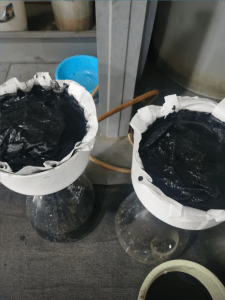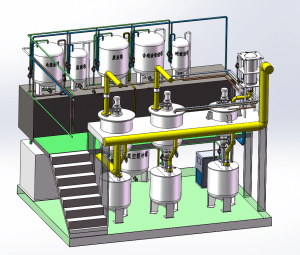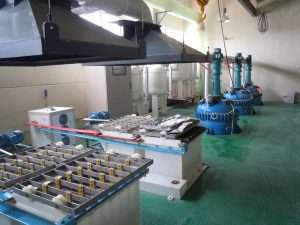Call us now:
Fire refining: Using the low melting point and easy oxidation of silver, silver-containing ores or other silver-containing materials are heated to high temperatures to separate the silver from other impurities, and then the silver is extracted by chemical methods. Although this method is simple, it produces a large amount of sulfur dioxide and other harmful gases, which pollute the environment.
Cyanidation refining: Silver-containing materials are mixed with cyanide so that silver ions form complexes with cyanide ions, and then silver is extracted by reduction with zinc powder. This method can extract silver efficiently, but cyanide is very harmful to the environment and human body, and can easily cause major accidents.
Solvent extraction method: The silver-containing materials are mixed with organic solvents so that silver ions form complexes with organic materials, and then the silver is extracted from the organic solvents with water or other methods. This method is safer and more environmentally friendly, but requires more complex equipment and operating techniques.
Electrolysis method: The material containing silver is used as the anode, and a direct current is passed through the electrolyte to reduce the silver ions to silver deposited on the cathode. This method is suitable for high purity silver refining, but requires high quality electrolyte and electrode materials.
Oxidation roasting method: After grinding silver-bearing ore into fine powder, it is added to a kiln for oxidation roasting to convert the silver in the ore into silver oxide, and then the silver oxide is chemically reduced to obtain pure silver. This method can improve the purity of silver, but it requires high temperature oxidation furnace and reduction furnace and other equipment.
Alloy separation method: The alloy material containing silver is mixed with other metals and then heated to a high temperature so that the various metals are separated in order of their melting points, and then the silver is extracted by chemical methods. This method can be used to refine silver-containing scrap or to recover silver from discarded electronic products, etc.
Bio-extraction method: Microorganisms are used to convert silver in materials containing silver into soluble silver ions, and then silver is extracted from the solution by chemical methods. This method has the advantages of environmental protection, low cost and high efficiency, but requires research and development of suitable microorganisms and biological reaction conditions.
Flotation method: The silver-bearing ore is crushed and ground finely, then treated with chemicals, and a froth agent is added so that the silver minerals combine with the froth agent to float to the surface, and the silver is extracted by chemical methods. This method is suitable for low-grade silver ore, but requires the use of a large number of chemicals.
Thermal decomposition method: The material containing silver is heated to high temperature, so that the silver is transformed into compounds such as silver oxide or silver nitrate, and then the silver is extracted out by chemical methods. This method is suitable for compounds with high stability of silver at high temperatures, but requires high temperature conditions and a long reaction time.
Metal exchange method: The silver-containing material is brought into contact with a metal exchange resin, so that the silver ions are exchanged with the metal ions in the resin, and then the silver is extracted from the resin by chemical methods. This method is suitable for low-grade silver-containing scrap, but requires the use of metal exchange resins and a large amount of chemicals.
In conclusion, each method of silver extraction has its own advantages and disadvantages, and a suitable method needs to be selected according to the specific situation. Meanwhile, with the continuous development of technology, new refining methods are emerging, bringing more options for silver refining.


